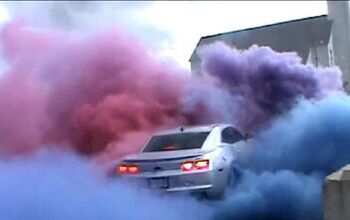MEMOIRS OF AN INDEPENDENT REPAIR SHOP OWNER: Cold-Weather Cause-And-Effect (not "Tall Winter Tales") - Part Two
Well, it looks as though winter is about done—at least from my vantage point west of the Rockies; but I still have a few more “revelations” to relate on the subject. As I stated in my last entry, these experiences were all new to me, since I’d never lived where “true winter” driving conditions were a regular occurrence. So, without ado, and as “green” as spring vegetation, here are a few more of my cold-weather “discoveries”.
While I wasn’t unfamiliar with a parking brake (some call it an emergency brake—which may in itself be a subject for further discussion) stuck in the “applied” position, I soon found additional reasons for this to occur in true winter weather.
Typically, on the West Coast, I’d see parking brakes sticking mostly because the brake shoes (we’re talking about rear-drum systems here; as most vehicles in the U.S.—save for Corvettes and upmarket Eurocars—were so equipped at the time) were wet when the brake was applied, allowing the shoes to “bond” to the drums via the oxidation process. It seemed like the VW Buses of the day achieved the most notoriety for this phenomena—particularly unfortunate for the tech called upon to “unstick” them, if the “Plan B” drum removal process was necessary.
In true winter weather, besides the “wet shoe scenario”, there were other possibilities involving the actuating linkage under the vehicle.
Speaking of in-field procedures in harsh weather, I can still recall the pain in my fingers while trying to reset distributor contact points well enough to make the vehicle run well enough to get it to a warmer place in which to work on it. When the ambient temperature got down to anywhere near 10F, this operation—as technically simple as it was—could be a real challenge (and provided one more reason NOT to mourn the passing of ignition contact points, for sure)! This was true of any procedure attempted in such conditions where bare hands were necessary.
I also found that any of the vehicles fluid-carrying systems had to be completely free of moisture to operate properly in the cold. Typically, in my L. A. stomping grounds, a little emulsified moisture in the power steering system, braking system, or transmission wouldn’t make its presence known—in the form of erratic operation—during the winter.
During true winter, however it was a different story. I learned to make it a point to regularly change and otherwise properly maintain these fluids, so as to keep all traces of moisture out.
When it came to the PCV System, I’d never heard of the PCV Valve and its associated plumbing rendered inoperative due to the water vapor passing through actually freezing. I had wondered why vehicles produced for the true winter market I’d been working on had insulation over the PCV plumbing. I remember reading a Honda Service Bulletin involving the retrofitting of insulation around the PCV valve and some of its plumbing, for the purpose of—you guessed it—reducing the possibility of system icing, and consequential oil-leak issues due to the ensuing over-pressurizing of the crankcase! I can’t remember ever working on a vehicle actually experiencing a PCV icing problem, but it was all food for thought.
Another cold weather bogey I learned to deal with involved the vehicle starting system. Component condition and circuit voltage drop rose to an extremely critical level, in comparison to the level acceptable in the warmer climes of the Southwest. If the battery, starter, or associated relay(s) were marginal, you’d know it when the weather turned cold—even though those components seemed to work all right in warmer temperatures. All of the test procedures and standards I learned during my schooling took on a new relevance, now. If things were not up to those standards, it turned out they flat-out just didn’t work in the cold. I became a “believer” and learned the new level of “critical” necessary to keep my customers rolling without drama during the winter months.
Phil ran a successful independent repair shop on the West Coast for close to 20 years, working over a decade before that at both dealer and independent repair shops. He is presently semi-retired from the business of auto repair, but still keeps his hand in things as a consultant and in his personal garage
More by Phil Coconis
Latest Car Reviews
Read moreLatest Product Reviews
Read moreRecent Comments
- ToolGuy TG grows skeptical about his government protecting him from bad decisions.
- Calrson Fan Jeff - Agree with what you said. I think currently an EV pick-up could work in a commercial/fleet application. As someone on this site stated, w/current tech. battery vehicles just do not scale well. EBFlex - No one wanted to hate the Cyber Truck more than me but I can't ignore all the new technology and innovative thinking that went into it. There is a lot I like about it. GM, Ford & Ram should incorporate some it's design cues into their ICE trucks.
- Michael S6 Very confusing if the move is permanent or temporary.
- Jrhurren Worked in Detroit 18 years, live 20 minutes away. Ren Cen is a gem, but a very terrible design inside. I’m surprised GM stuck it out as long as they did there.
- Carson D I thought that this was going to be a comparison of BFGoodrich's different truck tires.




































Comments
Join the conversation
For some reason the street we lived on had a bad wind tunnel effect , so if we were going to get a decent snow dad would put a throw rug over the engine (fit better than cardboard ) to keep the engine from being buried in snow of course he would pull the coil wire off so as to not forget. Also points were always changed in the early fall and re-adjusted again before summer vacation. The older cars had to have their valves adj. once a year and of course the wheel bearings had to be re-packed more often due to the quality of grease back then .Tires didn't last as long , dad could put new tires on the rim at home till radials came out they were tougher to do . We have it easy now
Yeah, the Brits got @ least half of the cold-weather battle licked. Getting the cars STARTED, on the other hand was a different story... Thanks for posting all these great stories!